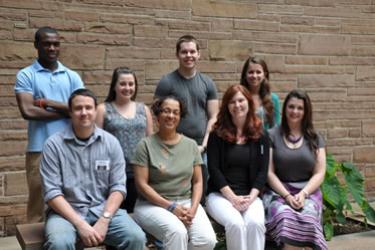
Project Description:
Multi-electrode arrays (MEAs) are used to measure extracellular signals from neurons, as a means of elucidating the mechanisms involved in neuronal communication which are thought to be important in learning and memory. In a conventional MEA, neurons are randomly positioned with respect to electrodes, a method which is sub-optimal. One remedy is to precisely position cell bodies on top of electrodes by chemically patterning “cell permissive” areas around the electrodes. However, this method still has limitations. Therefore, our current solution to precise cell patterning is to actively recruit neurons to electrode sites using positive dielectrophoresis (DEP), which utilizes non-uniform electric fields to attract dielectric spheres, such as neurons, to the areas of the maximum electric field strength (ie, in the area of the electrode).
The proposed BDSI project for 2012 includes investigating the behavior of neuronal cells in a variety of solutions and experimental strategies, in an effort to optimize their ability to respond to DEP electric fields and, at the same time to promote cell survival. In addition, the project will afford students the opportunity to learn state-of-the-art clean room techniques as they design, fabricate, package and test the next generation MEA devices to be used for precise patterning of primary hippocampal neurons.
(l-r): Susanne Petryna, Svetlana Tatic-Lucic, Ph.D., Tianyi Zhou, Susan Perry, Ph.D., Vicki Fluck
Project Year:
2012
Team Leaders:
Svetlana Tatic-Lucic, Ph.D. (Electrical & Computer Engineering)
Susan Perry, Ph.D. (Chemical Engineering)
Graduate Students:
Tianyi Zhou
Undergraduate Students:
Vicki Fluck
Susanne Petryna





